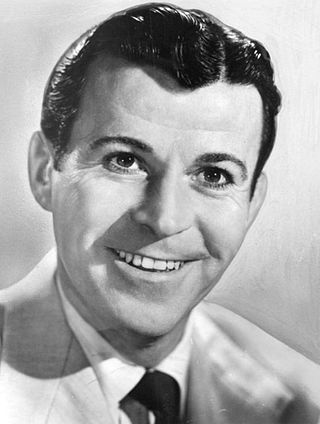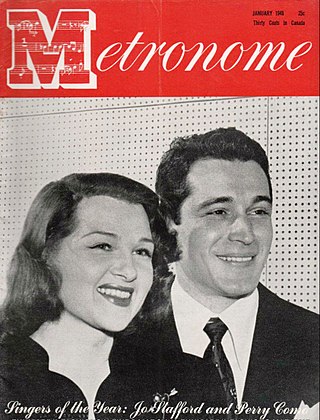Related Research Articles

Color television or colour television is a television transmission technology that includes color information for the picture, so the video image can be displayed in color on the television set. It improves on the monochrome or black-and-white television technology, which displays the image in shades of gray (grayscale). Television broadcasting stations and networks in most parts of the world upgraded from black-and-white to color transmission between the 1960s and the 1980s. The invention of color television standards was an important part of the history and technology of television.
The year 1953 in television involved some significant events. Below is a list of television-related events during 1953.
The year 1941 in television involved some significant events. Below is a list of television-related events during 1941.

The Walt Disney Company has produced an anthology television series since 1954 under several titles and formats. The program's current title, The Wonderful World of Disney, was used from 1969 to 1979 and again from 1991 onward. The program moved among the Big Three television networks in its first four decades, but has aired on ABC since 1997 and Disney+ from 2020 to 2023, but is still advertised during or after the program.

Dinah Shore was an American singer, actress, and television personality, and the chart-topping female vocalist of the 1940s. She rose to prominence as a recording artist during the Big Band era. She achieved even greater success a decade later in television, mainly as the host of a series of variety programs for the Chevrolet automobile company.
The Voice of Firestone was a radio and television program of classical music. The show featured leading singers in selections from opera and operetta. Originally titled The Firestone Hour, it was first broadcast on the NBC Radio network on December 3, 1928 and was later also shown on television starting in 1949. The program was last broadcast in 1963.

WNBC is a television station in New York City that serves as the flagship of the NBC network. It is owned and operated by the network's NBC Owned Television Stations division alongside Linden, New Jersey–licensed Telemundo station WNJU. WNBC's studios and offices are co-located with NBC's corporate headquarters at 30 Rockefeller Plaza in Midtown Manhattan; WNJU's facilities in Fort Lee, New Jersey, also serve as WNBC's New Jersey news bureau. Through a channel sharing agreement with WNJU, the two stations transmit using WNJU's spectrum from an antenna atop One World Trade Center.

Dennis Day was an American actor, comedian and singer. He was of Irish descent.

The Richard Boone Show is an anthology television series. It aired on NBC from September 24, 1963 until September 15, 1964. It was broadcast on Tuesdays from 9 to 10 p.m. Eastern Time.

The Chesterfield Supper Club is an NBC Radio musical variety program (1944–1950), which was also telecast by NBC Television (1948–1950).

The Chamber Music Society of Lower Basin Street is a musical variety radio program which began on the Blue Network on February 11, 1940.
Geographically Speaking was an American travel series that debuted on June 9, 1946, on NBC, and aired Sundays at 8:15 pm EST immediately following the game show Face to Face.
You Are an Artist is a television series, which first aired on NBC flagship station WNBT-TV in New York City and "a small network of stations on the East Coast" on May 13, 1946, and then continued on the NBC Television network until 1950.
Campus Hoopla is an American game show that ran on the NBC Television network from December 27, 1946, until it ended on December 12, 1947.
The Chevrolet Tele-Theatre is an American anthology series that aired live on NBC Mondays at 8 pm EST from September 27, 1948 to June 26, 1950. The program presented both news headlines and live dramatic performances of either original plays or works adapted for television from the stage. Sometimes the show was referred to as Chevrolet on Broadway or The Broadway Playhouse; particularly when the program was presenting an adapted stage work from New York City's theatre scene.
Public Prosecutor is an American television series produced in 1947–1948, which first aired in 1951.
Television Quarterback is an early American television program, which aired from 1945 to 1947 on New York City station WNBT. By October 1947, the program was also broadcast in Philadelphia, Schenectady, and Washington at 8 p.m. Eastern Time on Fridays.

Lillian Cornell was an American singer on old-time radio and an actress in films in the early 1940s.
The National Broadcasting Company (NBC) is an American English-language commercial broadcast television and radio network which is owned by Comcast through NBCUniversal. The network is headquartered at 30 Rockefeller Plaza in New York City, with additional major offices near Los Angeles, and Chicago. Along with ABC and CBS, NBC is one of the traditional "Big Three" American television networks.
References
- 1 2 3 "NBC". Billboard. December 30, 1944. p. 7. Retrieved April 12, 2024.
- ↑ "RCA Victor" (PDF). Television. September 1947. p. 27. Retrieved April 12, 2024.
- ↑ "The World in Your Home - Full Cast & Crew". TV Guide. Archived from the original on April 12, 2024. Retrieved April 12, 2024.
- ↑ "RCA Victor on WNBT Fridays". Billboard. November 4, 1944. p. 12. Retrieved April 12, 2024.
- ↑ "Disney Films for Video". The Independent Film Journal. November 11, 1944. p. 33. Retrieved April 12, 2024.
- ↑ "Brown, MacDonald Forming Film Firm". Broadcasting. November 26, 1945. p. 80. Retrieved April 12, 2024.
- ↑ "RCA Televises Bryan Films". Business Screen Magazine. July 30, 1945. p. 36. Retrieved April 12, 2024.
- ↑ "(untitled brief)". Heinl Radio Business Letter. November 15, 1944. p. 8. Retrieved April 12, 2024.